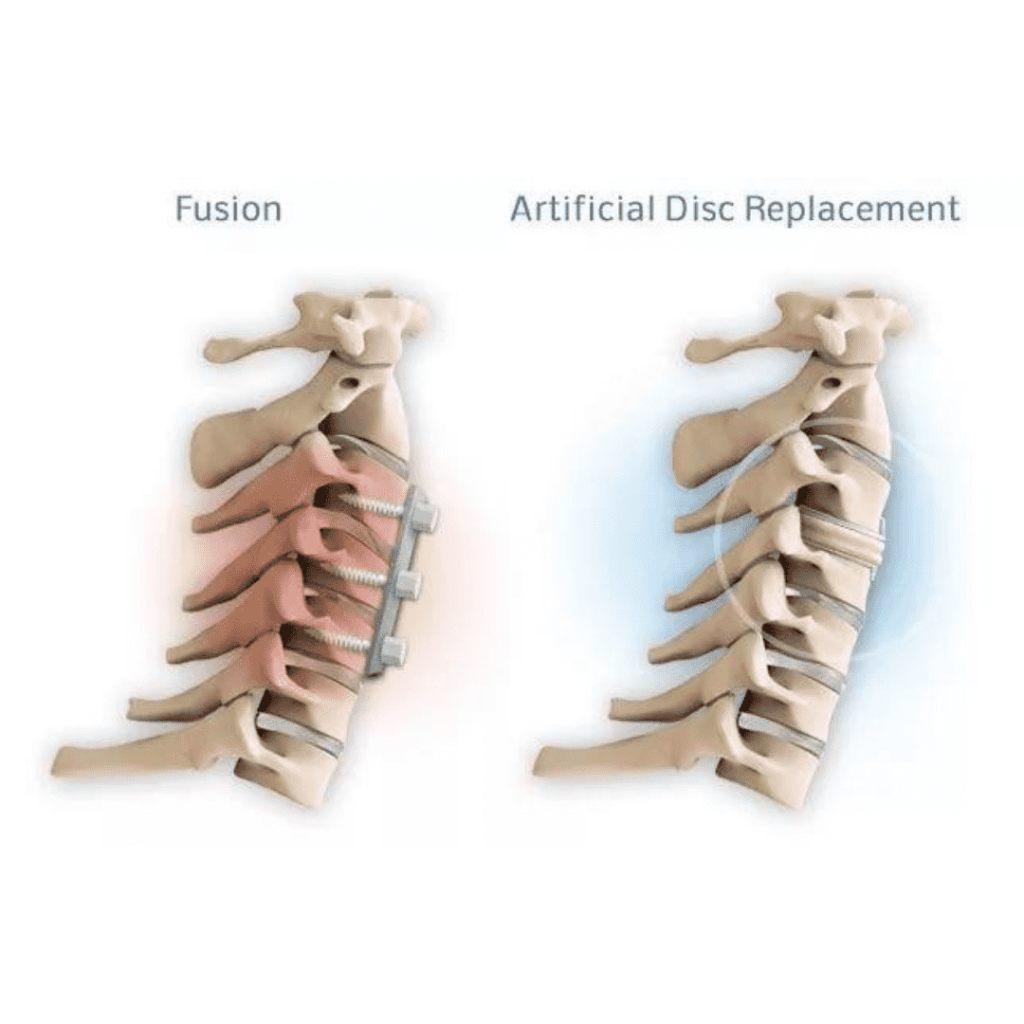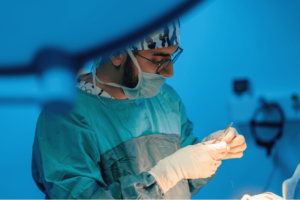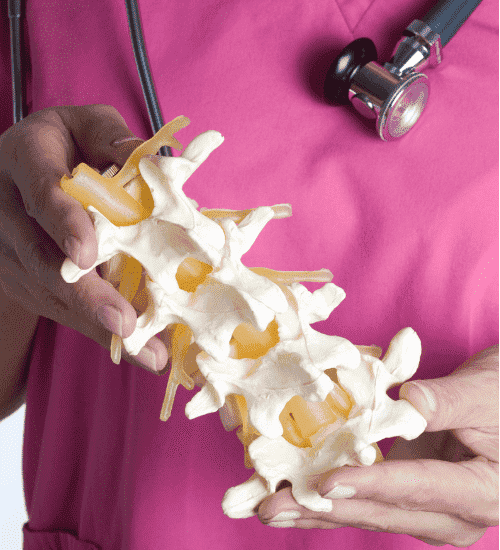- (213) 369-4583
- Monday - Friday
- 9 am - 5 pm
Artificial Disc Replacement Surgery: All You Need to Know!

Mar 29, 2022
Degenerated or herniated discs have caused pain and mobility issues for thousands of people. However, if you’re like most people, you probably would have never thought about your intervertebral discs until you experienced a problem. Fortunately, over the years the medical space has advanced, and surgical options such as Artificial Disc Replacement have made life easier for countless patients. If you are not familiar with this treatment or want to learn more, here is a detailed account of everything you need to know about artificial disc replacement surgery.
What Is Disc Replacement Surgery?
Disc Replacement Surgery is an advanced medical procedure that uses an anterior technique to replace a rubbery, damaged (or degenerated) disc present in the spine with a new artificial disc. The artificial disc is made of metal or a combination of metal and plastic to eliminate the back pain and preserve spine mobility. Disk replacement is generally seen as an alternative to spinal fusion surgery which permanently joins two vertebrae together.
Artificial Disc Replacement Versus Spinal Fusion

Unlike replacing the damaged disc, spinal fusion is a medical procedure that aims to fuse together disc spines by removing the damaged disc and inserting a spacer with a bone graft in its place.
While both methods have their pros and cons, young patients prefer artificial disc replacement surgery over spinal fusion to ensure that there is no compromise on mobility and retain their active lifestyle. Another major reason for patients to choose disc replacement surgery is the fact that the healing time is comparatively less. On average, it takes six to eight weeks after the replacement surgery to heal since there is no waiting period for bones to properly fuse together and heal, while spinal fusions can take up to three months.
Signs That You May Need a Disc Replacement
Listed below are some of the signs that you should look out for, and if you can relate to any of those, the chances are that you might require a disc replacement surgery. But we always recommend visiting a neurosurgeon to get a diagnosis done, because surgery is always the last option.
- Radiating Pain That Travels Through Limbs
If you’ve been experiencing pain that travels through your arms or legs, the chances are that you may have a pinched nerve. This could either be a result of herniated or compressed cervical disc. If you are experiencing this, it is imperative to seek medical care from a back pain specialist to diagnose the root cause of your pain.
In most cases, trying a course of conservative treatment methods would be recommended to manage the pain. However, if the situation is difficult to manage because the discs are severely weakened, a neurosurgeon would suggest surgery.
- Conservative Treatment Methods Aren’t Helping.
If conservative pain treatments such as back braces, epidural steroid injections, painkillers, or physical therapy are not helping out and the back pain still persists, then disc replacement surgery may be your next option.
Consulting a neurosurgeon and discussing your case openly will give you a better idea of what your situation looks like and whether or not you should consider surgery.
- You Have Degenerative Disc Disease.
If you were diagnosed with degenerative disc disease, and the pain and damage have escalated to a point where conservative treatment methods are no longer manageable, then considering disc replacement surgery makes the most sense.
- You’ve Been Diagnosed With a Herniated Disc.
In most cases, herniated disc cases can be resolved with adequate rest, anti-inflammatories, and physical therapy. However, some severe cases require greater intervention. This is when artificial disc replacement surgery may be recommended.
We would recommend consulting a back pain specialist to discuss your case and discover the right plan of action for you.
How a Disc Replacement Procedure Works
- Before the Surgery
After determining that artificial disc replacement surgery is the best option for you, your neurosurgeon will have a list of questions about your medical history and overall health, along with recommendations for you to get ready for the procedure. For instance, it is imperative for you to have a healthy body that has the ability to heal fast to ensure a successful surgery procedure. Therefore, your doctor would need to know about all the medicines you are taking, as certain medications can affect the body. If that is the case, he/she might ask you to temporarily pause taking them or take an alternative medication.
- During the Surgery
Like most complex surgeries, disc replacement surgery requires patients to go through administered anesthetics and put under a deep sleep. At the start of the procedure, a surgeon will make an incision for access to the patient’s spine, then remove the damaged disc, and insert a new artificial disc in its place. Once done, everything is set back in place, and the incision is closed up.
- Post Surgery
Your hospital stay wouldn’t be any longer than a day or two. Your doctor would show you how to move correctly with caution and introduce you to gentle stretches to aid in recovery.
Things to Know About Artificial Disc Replacement
1- Surgery allows you to maintain the movement and flexibility of your spine.
Unlike spinal fusion, disc replacement surgery preserves motion at the level of the spine through an artificial disc that is specifically designed to mimic the functions of a natural disc. Spinal fusion may be a good choice for painful symptoms of disc disease, but for most cases, artificial disc replacement surgery may be more beneficial.
2- Artificial disc replacement can help you avoid adjacent segment disease.
Adjacent segment disease has always been a concern for those who have had spinal fusion surgery. The term refers to the degeneration in the parts of the spine above and below the area of surgery. The issue arises due to the compromised motion between two vertebrae, which forces the adjacent segments of the spine to take on more of the “load,” leading to complications. However, since artificial disc replacement allows for movement, it is very unlikely for patients to encounter adjacent segment disease.
3- Surgery may be done in an outpatient setting as minimally invasive spine surgery.
Most spine-related surgeries now, including disc replacement surgery, only require minimal incisions and short hospital stays. Unlike the surgeries in the past, they now cause less damage to surrounding muscles and tissues, which ensures less bleeding, decreased risk of infection, and fewer complications, just to name a few.
4- Recovery may be quicker than you anticipate.
Contrary to common belief, patients after a disc replacement surgery can be out of bed and moving around within a few hours after the procedure. In fact, within a week or two, patients may be able to drive and even return to work. However, they may experience mild discomfort, often well managed with ice and pain relievers.
Related reading: A Guide To Spinal Stenosis And It’s Symptoms
Contact Southern California Brain & Spine Surgery
If you are experiencing back pain symptoms, you should not ignore this and contact the spine experts at Southern California Brain & Spine Surgery today. Our board-certified Neurosurgeon in Los Angeles will listen to your concerns and review all treatment options with you to create a plan suited to your needs. For more information on Disc Replacement Surgery or to discuss your case, contact us through our website or reach us at (213) 369-4583 to speak with one of our spine specialists.


